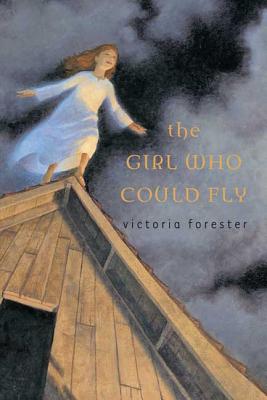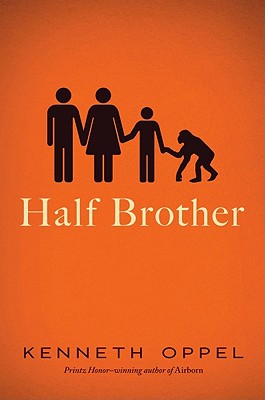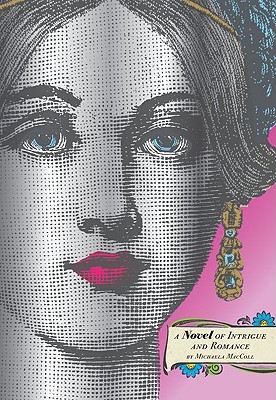
Book talk: Mrs. McCloud knew there was something wrong with her daughter the day she rolled off of a table and floated in the air instead of falling. She did her best to protect Piper from gossip by keeping her at home and encouraging her to keep her feet on the ground, but Piper was born to fly. When she finally gets to play with kids her age she soars in the air to catch a fly ball and the next morning the McClouds' farm is swarmed by reporters. They are saved from the media circus by an elegant woman who whisks Piper away to a special school for those with extraordinary abilities. Piper is excited for the chance to interact with kids like her and she is provided with clothes and meals customized to her tastes. But soon the paradise of the school starts to feel like a prison. Piper dreams of the sky from thirteen floors below ground and makes plans for an escape.
Rocks my socks: Piper is a lovable character with a folksy farm-girl charm and the narration has an old-fashioned storytelling charm about it as well. The ability to fly isn't anything new in works of fiction but Forester shows a lot of imagination in the abilities of the other children and especially in the animals and plants at the institution. Watching Piper's parents slowly learn to accept Piper's uniqueness is heart-warming and reminds me of Marilla and Matthew Cuthbert from Anne of Green Gables (which Forester cited as a favorite of hers in the interview at the back.) I liked the novel's overall message that you should embrace what makes you unique and use your talents to try to make the world a better place.
Rocks in my socks: Sometimes the folksy sayings and overly earnest narration became a bit much for me and at times it seems to cross a line and make fun of the farm life it is depicting. Piper's parents eventually come around but the rest of the town never accepts Piper and a lot of focus is placed on the mean-spirited ways of the town gossip. In contrast everyone associated with the institute outside of the small town is portrayed as sympathetic, with even the main villain revealing a history that softens the reader's attitude twoard her at the end. The children at the institution have great names that show diverse origins and sound nice but all the town children other than Piper have alliterative double names like Billy Bob, Piggy Pooh, and Lizzie Lee. Some of the characterization is a bit sloppy with the twin characters presented as interchangeable and even Piper lacking dimension with her unfailing optimism and constant commitment to do what she believes right. I appreciate the fact that the school bully ended up being Piper's ally but this change in his character came from nowhere and was completely inconsistent with the way he was previously portrayed in the novel. The plot is full of holes as well: from the basic premise of a government facility spending ridiculous amounts of money trying to make abnormal things normal instead of trying to use their abilities to their advantage, to the details like the torture scene where one moment she is in so much pain she can hardly breathe and the next, with the same conditions, she is making defiant quips.
Every book its reader: This book is great for those looking for an old-fashioned narrative with folksy charm. Fans of superhero stories will enjoy reading about the kids' abilities and unlike most superhero stories the protagonist is female. There is a torture scene and descriptions of the way the institute is mistreating its subjects, but these scenes are so unrealistic and the resolution is so neat that it is still appropriate for younger children. I'd give it to fourth through seventh grade.
The Girl Who Could Fly by Victoria Forester
Buy it or check it out!





